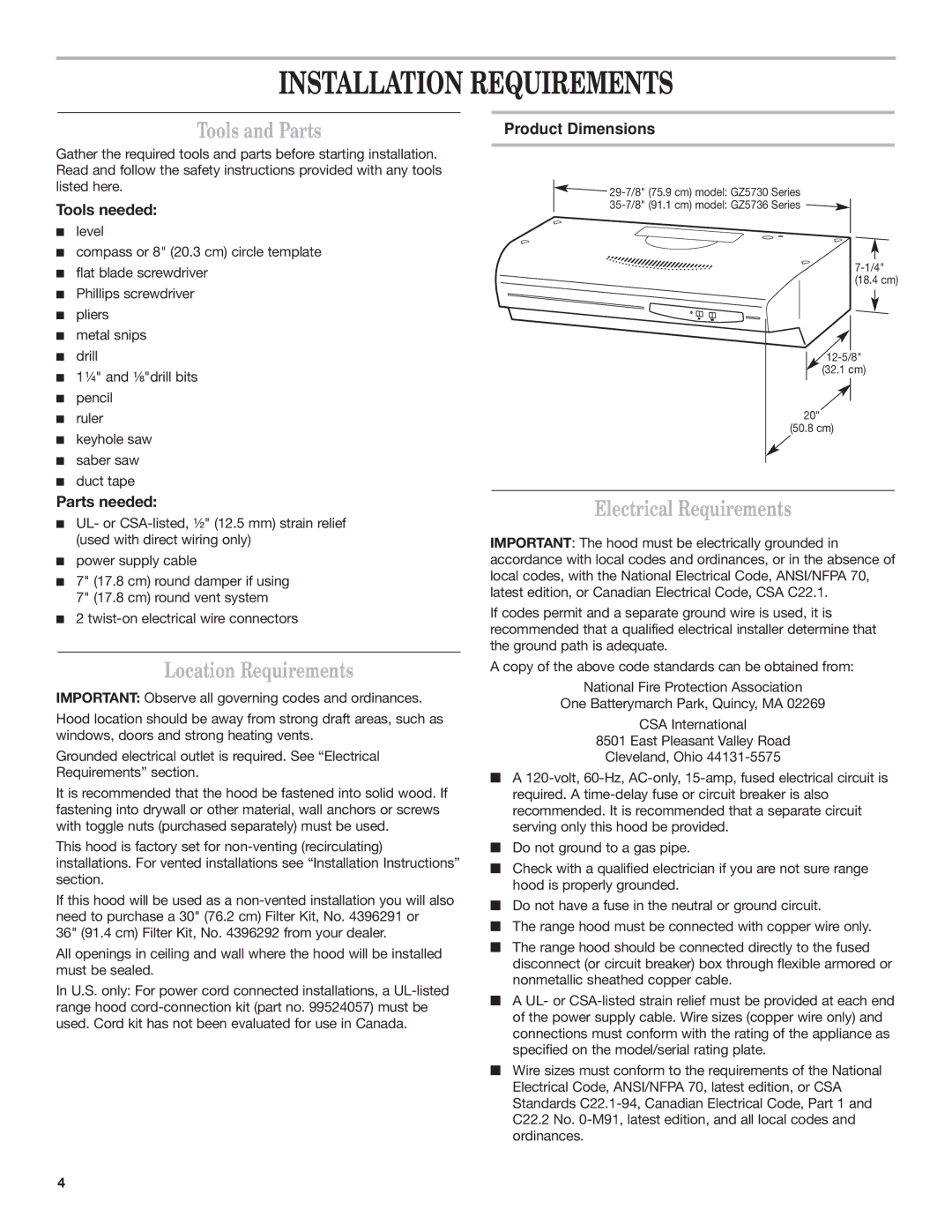
INSTALLATION REQUIREMENTS
Tools and Parts
Gather the required tools and parts before starting installation. Read and follow the safety instructions provided with any tools listed here.
Tools needed:
■level
■compass or 8" (20.3 cm) circle template
■flat blade screwdriver
■Phillips screwdriver
■pliers
■metal snips
■drill
■1¹⁄₄" and ¹⁄₈"drill bits
■pencil
■ruler
■keyhole saw
■saber saw
■duct tape
Parts needed:
■UL- or
■power supply cable
■7" (17.8 cm) round damper if using 7" (17.8 cm) round vent system
■2
Location Requirements
IMPORTANT: Observe all governing codes and ordinances.
Hood location should be away from strong draft areas, such as windows, doors and strong heating vents.
Grounded electrical outlet is required. See “Electrical Requirements” section.
It is recommended that the hood be fastened into solid wood. If fastening into drywall or other material, wall anchors or screws with toggle nuts (purchased separately) must be used.
This hood is factory set for
If this hood will be used as a
All openings in ceiling and wall where the hood will be installed must be sealed.
In U.S. only: For power cord connected installations, a
Product Dimensions
(18.4 cm)
![]()
20"
(50.8 cm)
Electrical Requirements
IMPORTANT: The hood must be electrically grounded in accordance with local codes and ordinances, or in the absence of local codes, with the National Electrical Code, ANSI/NFPA 70, latest edition, or Canadian Electrical Code, CSA C22.1.
If codes permit and a separate ground wire is used, it is recommended that a qualified electrical installer determine that the ground path is adequate.
A copy of the above code standards can be obtained from:
National Fire Protection Association
One Batterymarch Park, Quincy, MA 02269
CSA International
8501 East Pleasant Valley Road
Cleveland, Ohio
■A
■Do not ground to a gas pipe.
■Check with a qualified electrician if you are not sure range hood is properly grounded.
■Do not have a fuse in the neutral or ground circuit.
■The range hood must be connected with copper wire only.
■The range hood should be connected directly to the fused disconnect (or circuit breaker) box through flexible armored or nonmetallic sheathed copper cable.
■A UL- or
■Wire sizes must conform to the requirements of the National Electrical Code, ANSI/NFPA 70, latest edition, or CSA Standards
4
